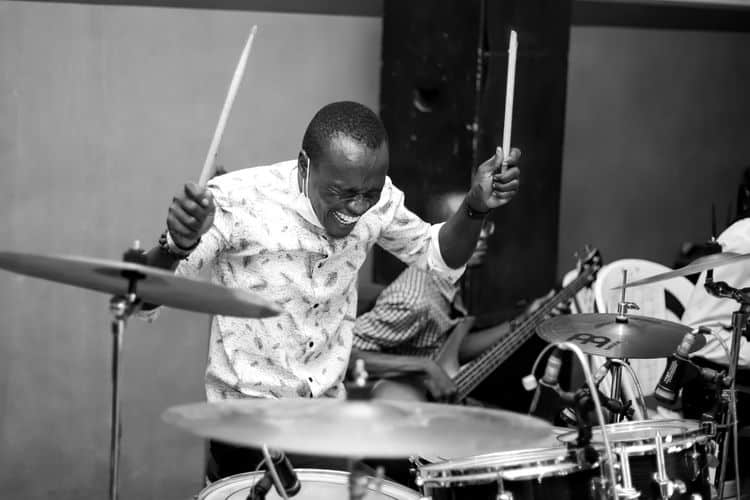
The term “jazz” often has a confusing connotation because it can mean anything from big-band jazz to blues or small combo jazz to smooth jazz to Brazilian jazz to hip-hop jazz. But sometimes, these subtypes can be played in combination with other genres by the same performer who takes influence from multiple genres.
Jazz legends such as Frank Sinatra, Louis Armstrong, Ella Fitzgerald and Miles Davis are frequently mentioned. Usually mentioned in jazz, hard bop, smooth jazz and free jazz are examples of subtypes. However, in this article, we’ll look into a type of jazz called jazz fusion, which incorporates rock’n’roll, funk, and electronic instruments.
What is Jazz Fusion?

Rather than a specific sound or genre of music, jazz should be considered a work of art, an expression and a culture. Jazz fusion is a melodic genre that emerged in the late 1960s when musicians combined jazz congruity and improvisation with funk, rock & roll and R&B. Jazz musicians began to use electric guitars, speakers and consoles were popular in rock & roll and R&B.
The jazz combo, which influenced so much of the jazz music that came after it, arose from consistent experimentation and the ability to push past traditional large band and small-combo jazz limits.
Before the 1960s, jazz musicians were determined to make the most of acoustic instruments, such as the saxophone, trumpet, trombone, upright piano, acoustic bass, drums and guitar. However, with the introduction of modern electronic instruments, pioneering jazz musicians such as Miles Davis, Herbie Hancock and Chick Corea incorporated this innovation into their music and improvisation.
The melody components such as tune structure, symphonious intricacy, and extemporization were still a massive part of jazz fusion music in the late 1960s.
Why Was Jazz Fusion Controversial?
The term “fusion” can refer to a harmonious combination, and the word “jazz” can refer to any genre of music. Still, since its introduction in the 1960s, “jazz fusion” has proven to be a seriously arcane term.
When the term “jazz fusion” first appeared, several jazz community members did not consider combining electric jazz with “real jazz.” The rejection wasn’t unique to jazz alone. It has existed since the dawn of time; for example, many traditional hip-hop listeners do not consider singing with autotune “real” rap music.
Musicians like Jimi Hendrix, James Brown and Sly & the Family Stone influenced Miles Davis. His seminal Bitches Brew collection abandoned the swing beat in favor of funk and rock beats.
Jazz critics believed that jazz fusion had strayed from its essence, and a few jazz community members saw exciting music as less complex than jazz. However, jazz fusion developed into a more significant piece of contemporary jazz music during the 1970s and the sound of jazz fusion became a trendy sound in the jazz world.
As jazz combo specialists incorporated so many influences into their music after Bitches Brew, most jazz combo music proved challenging to arrange. Contemporary jazz musicians like Pat Metheny, Snarky Puppy and Marcus Miller represent a few examples of jazz musicians challenging to categorize.
Jazz Fusion Artists
Miles Davis is undoubtedly one of the prominent figures in jazz fusion, having delivered exceptional jazz fusion collections, for example, In a Silent Way and Bitches Brew. Also featured were other notable jazz fusion specialists like Herbie Hancock, John McLaughlin, Chick Corea and Joe Zawinul.
These experts then created and offered the most well-known jazz combo and electronic jazz collections ever. Electric guitarists are an essential part of the jazz ensemble, as good music and rock guitar have significantly influenced jazz.
Jimi Hendrix had a notable influence on guitarists like John McLaughlin and Larry Coryell. They used Fender Stratocasters, fuzz pedals, and booming Marshall guitar amps to create the stone guitar sound. Later, jazz-fusion guitarists and writers such as Pat Metheny and Larry Carlton became prominent.
Aside from electric guitars, consoles and synthesizers played a vital role in the jazz-fusion sound. From Weather Report to The Headhunters, keyboardists and writers like Joe Zawinul, Chick Corea, and Herbie Hancock were instrumental in establishing that distinct jazz combo sound. In addition to these guitarists and keyboardists, Wayne Shorter and others are noteworthy jazz fusion specialists.
There is something for everyone at our jazz bar in the West Village. When you need to relax in a lovely setting, with a martini and some jazz, the warm ambiance will help you unwind. It’s an inviting, enthusiastic environment where you can eat delectable food, drink, and listen to live jazz.